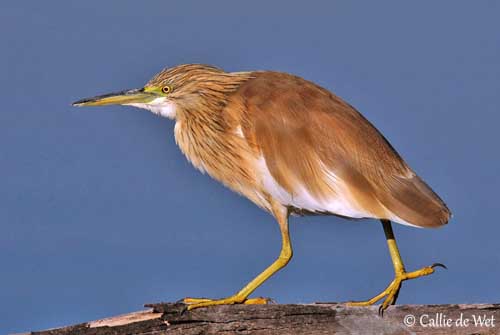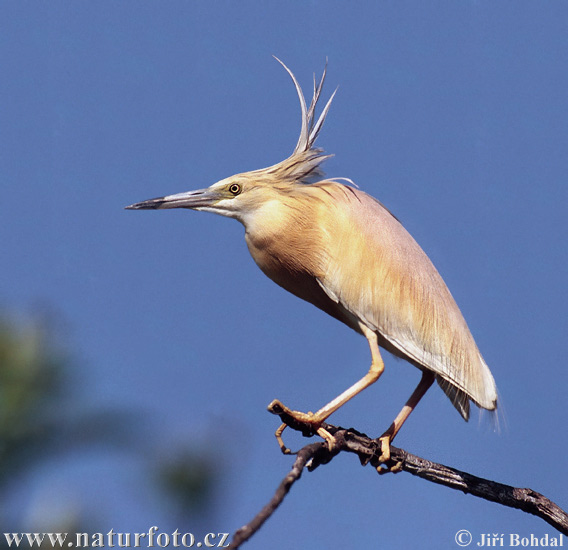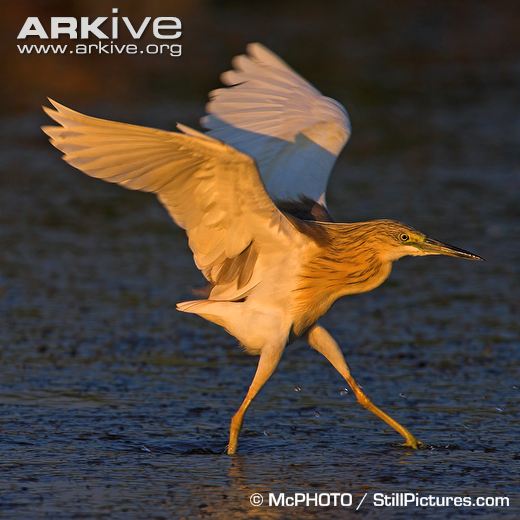
Ardeola ralloides
SUBFAMILY
Ardeinae
TAXONOMY
Ardea ralloides Scopoli, 1769, Carniola. Monotypic.
OTHER COMMON NAMES
French: Crabier chevelu; German: Rallenreiher; Spanish: Garcilla
Cangrejera.
PHYSICAL CHARACTERISTICS
Tawny buff brown with a streaked head, crest, and back,
and light belly. Length is 16.5–18.5 in (42–47 cm); weight
is 8–13 oz (230–370 g). In breeding it develops a distinctive
black and white mane. Immature birds are similar to adults in
nonbreeding plumage, but drabber and lack crest and back
plumes.
DISTRIBUTION
Occurs in Europe, Africa, Madagascar, and the Middle East
to Iran.
HABITAT
Occurs in dense marshes—shallow fresh water with a cover of
reeds and dense bushes. Its principal habitat throughout its
range is now rice fields. It also occurs in ponds, canals, ditches,
irrigated land, similar shallowly flooded areas. Seacoasts, reefs
and islands are used on migration. For nesting, it tends to prefer
dense trees and shrubs near its feeding areas.
BEHAVIOR
Often overlooked because it blends into dense vegetation.
Roosts in groups, using sheltered woods or reed beds. The
alarm and flight call given when disturbed or when flying to
and from roosts is highly recognizable, giving the bird its name.
FEEDING ECOLOGY AND DIET
Typically feeds by searching for prey in a standing, crouched
posture, either in the open or among the reeds. Usually feeds
alone, defending its territory, although it also feeds in small
groups or large flocks in winter and on migration. Feeding
success is higher for solitary birds than those feeding in flocks.
Feeds during the day, especially at twilight. Diet is relatively
small prey, particularly fish, frogs, and tadpoles, as well as insects
and insect larvae.
REPRODUCTIVE BIOLOGY
Herons in Europe and North Africa nest from late spring to
summer. In tropical Africa, it breeds primarily in the rainy season.
Nests in dense bushes or small trees, near or overhanging
water, and less frequently in reed beds and papyrus swamps,
using either the reed or small trees. Typically nests colonially
with other species, although sometimes solitarily. Nests are
small, bulky, and compact, 7–11 in (17–27 cm) in diameter
made of reeds, grass, and twigs. Eggs are greenish blue. The
clutch is four to six eggs in Europe, three to four in Madagascar
and southern Africa. Clutch sizes have decreased in southern
Europe over several decades. Incubation is 22–24 days in
Europe, 18 days in Madagascar. Young begin to clamber from
the nest into branches at 14 days. They are fledged at 45 days
(35 days in Madagascar). Young form groups at the colony site.
CONSERVATION STATUS
Not threatened, but its populations are variable. Historic declines
appear to be due to a combination of hunting, habitat
change, and perhaps climate. In some areas, the bird has increased
its range in recent decades, likely due to its concentrated
use of rice fields.
SIGNIFICANCE TO HUMANS
Often occurs close to humans, living in rice fields and marshes
adjacent to towns and villages. It is not often noticed, but its
call is distinctive.
Photo Gallery of - Squacco heron




 Animalia Life
Animalia Life